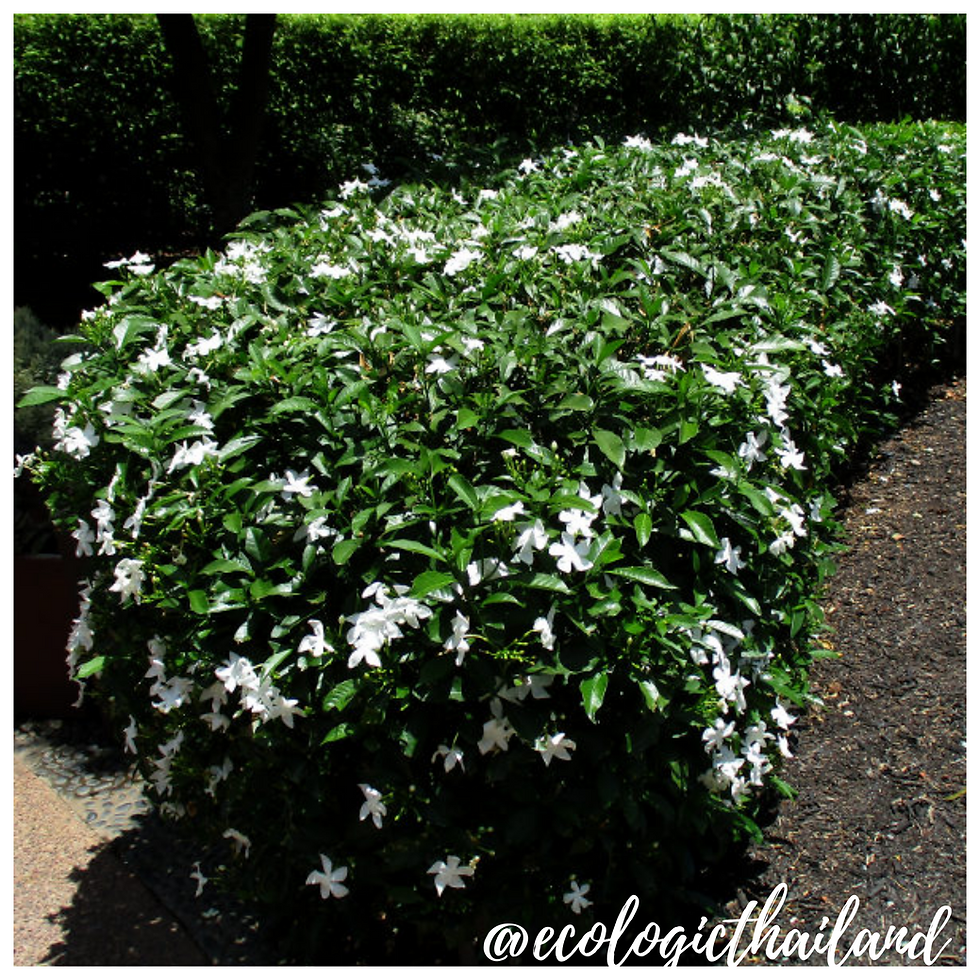Papaya
- Eco-Logic Resort
- Aug 29, 2020
- 3 min read
Updated: Sep 29, 2020
Malakor | มะละกอ | Carica Papaya
Family: Caricaceae - Genus: Carica

Papaya can be found near the vegetable gardens of the Thai Child Development Foundation, along the paths, in the food forest and around the kitchen area of Eco-Logic Thailand on Mount Never-rest.
Papaya trees grow in three sexes: male, female, and hermaphrodite.
The male produces only pollen, never fruit, the flowers of the male can be eaten.
The female produces small, inedible fruits unless pollinated.
The hermaphrodite can self-pollinate since its flowers contain both male stamens and female ovaries. Almost all Paksong papaya orchards contain hermaphrodites.
Papaya can be harvested the whole year through.

THE TREE
The papaya is a small, sparsely branched tree, usually with a single stem growing from 5 to 10 meter tall, with spirally arranged leaves confined to the top of the trunk. The lower trunk is usually scarred where leaves and fruit were borne.
All parts of the plant contain latex.

PAPAYA LEAVES
The leaves are large, 50–70 centimeter in diameter, with seven lobes.
At our restaurant we use the leaves for decoration of the tables.

PAPAYA FLOWERS
The flowers are five-parted; the male flowers have the stamens fused to the petals. The female flowers have a superior ovary and five contorted petals loosely connected at the base. The flowers are sweet-scented, open at night, and wind- or insect-pollinated.
PAPAYA FRUIT

The fruit is a large berry that is generally spherical or round in form and about 15–45 centimetre long and 10–30 centimetre in diameter. Papaya varies in size and shape, depending on variety and type of the plant. Papaya fruit grows on the stem of the tree. It can take as little as six to nine months until producing and harvesting the fruit after planting the seeds.
Papaya is ripe when it feels soft its skin has attained an amber to orange hue and along the walls of the large central cavity are numerous black seeds.
PAPAYA LEAF STEMS

Papaya leaf stems can be used as natural drinking straws. Perfect for fresh coconuts, juices and smoothies.
Pluck a leaf from the tree, cut the leaf away from the stem.
Make sure the stem is rinsed thoroughly, to avoid the taste of latex.
CULINARY USES OF PAPAYA FRUIT
The ripe fruit of the papaya is usually eaten raw, without skin or seeds.
The black seeds of the papaya are edible and have a sharp, spicy taste.
The flowers of the papaya can be eaten too.
In Thailand the green papaya salad is famous of course, but chutneys, smoothies and jams are great with papaya too.
NUTRITION
Raw papaya pulp contains 88% water, 11% carbohydrates, and negligible fat and protein.
Papaya fruit is a significant source of vitamin C (75% of the Daily Value), and otherwise papaya has a low content of nutrients.
TRADITIONAL MEDICINAL USE OF PAPAYA
NOTE: please take advice from a doctor if you are planning to use herbal medicine.
Leave juice: can be used to treat digestive disorders because it is rich in enzymes, necessary for digestion.
Papain (an enzyme extracted from raw papaya) has beneficial effects that can be used in the wound healing processes, injuries, edema, inflammation.
Latex extracted from the still-green fruit can be used for its anti-parasitic properties.
The latex collected by incising still green fruits can be used to remove warts and corns.
Seeds
Papaya seeds contain essential nutrients that can help to cure liver cirrhosis, it can be beneficial for kidney health and to prevent kidney failure. Seeds have anti-inflammatory properties and can be used to relieve arthritis, joint diseases, pain, and redness.
A small amount of Papaya seed can kills harmful bacteria such as E. coli, staphylococci, and Salmonella. They can also help to fight viral infections and can serve as a cure for dengue fever, typhoid fever, and many other diseases.
Papaya seeds contain agents that can prevent the growth of cancer cells and tumors.
Papaya seeds contain an alkaloid called “Carpain” that can kills intestinal worms and amoeba parasites.
Papaya seeds can prevent the body from absorbing too much fat and sugar, which speeds up the digestion process and contributes to weight loss.
INTO THE WILD: a down to earth experience

For guests and visitors to Paksong we organize weekly tours "The Edible Forest" and Foraging weekends: Into the Wild. We work with local guides to take you in the jungle of Paksong. After foraging, we will cook a meal with the ingredients, using bamboo together with you!
Come and join and learn about the abundance of food that nature gives us!
INTO THE WILD!


















Comments